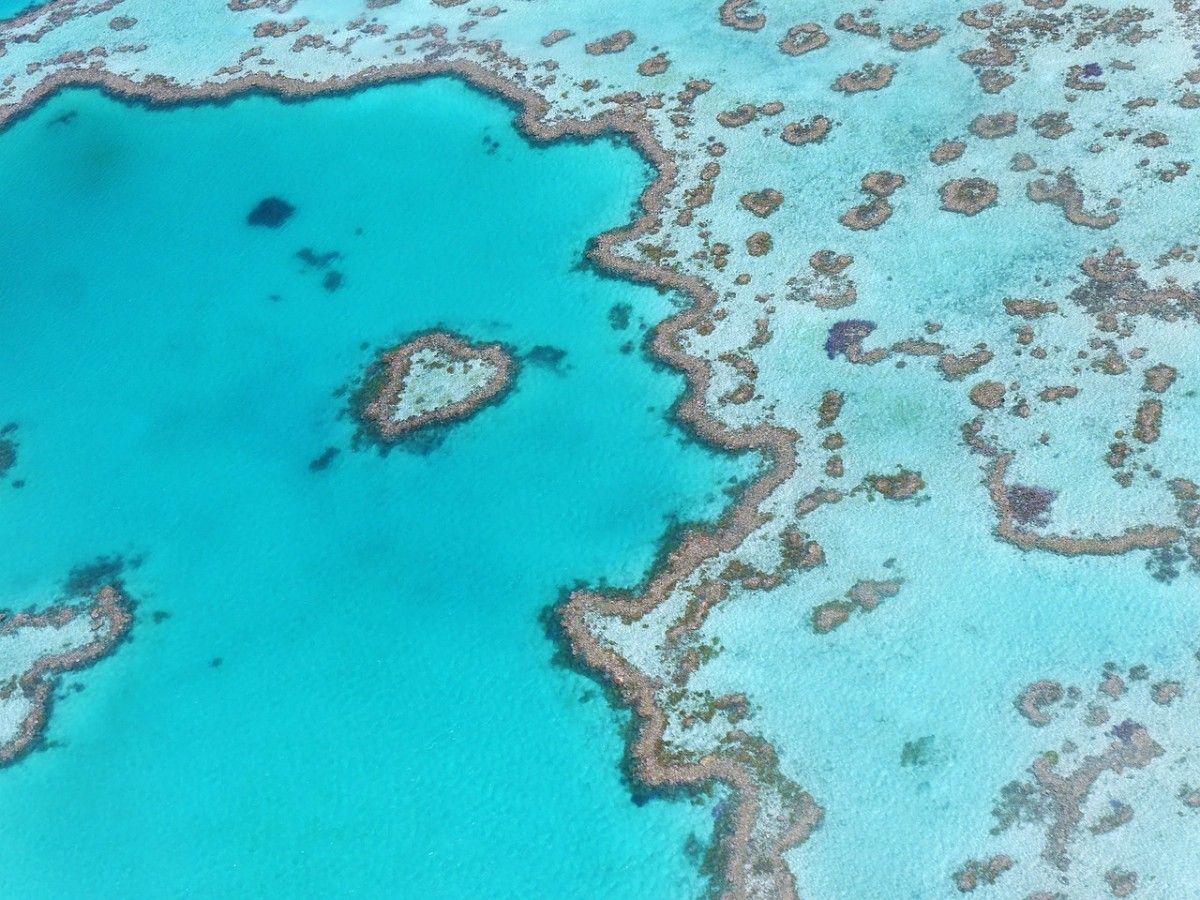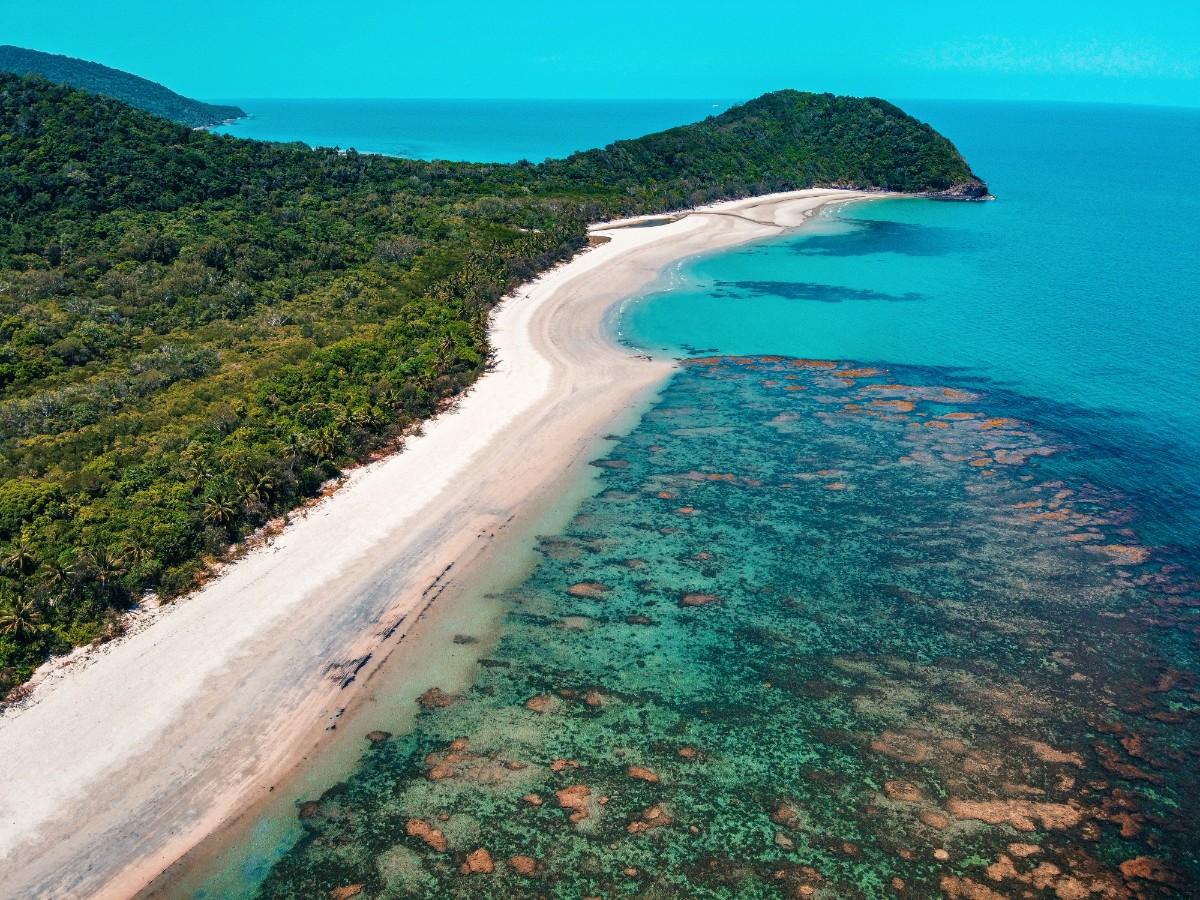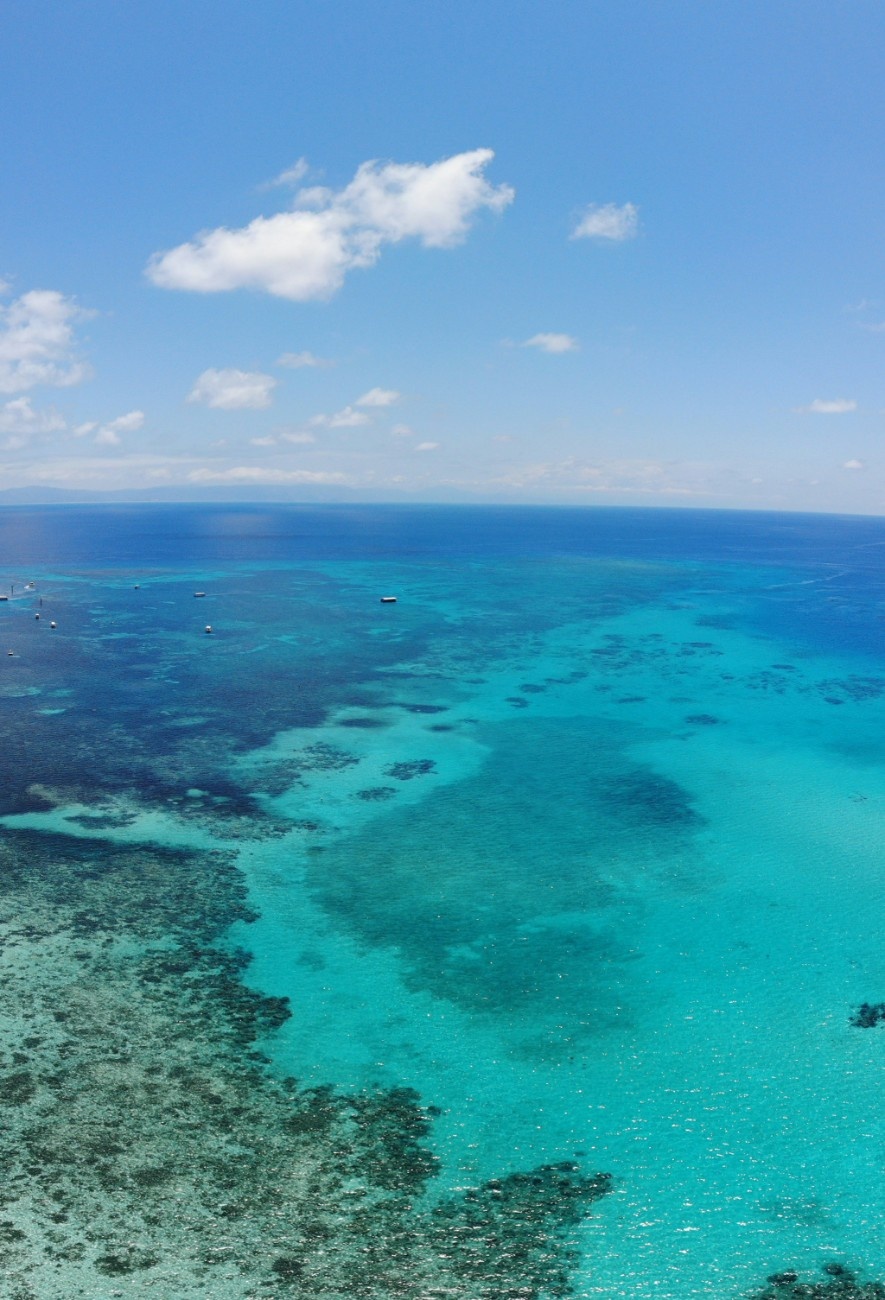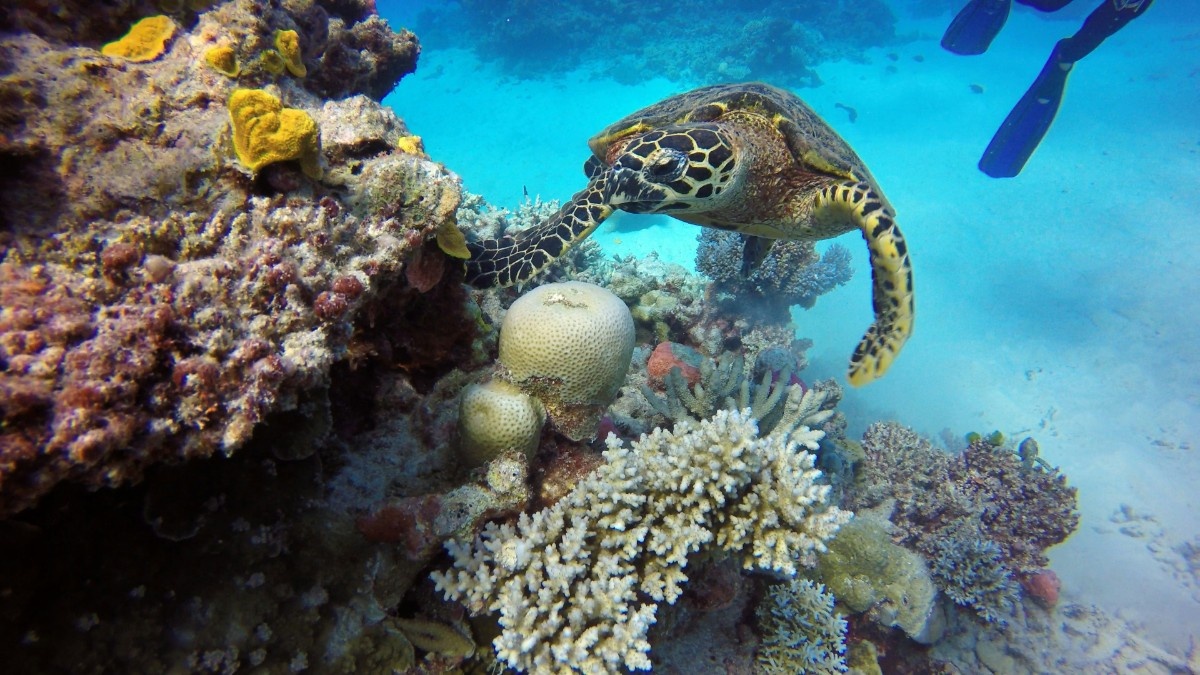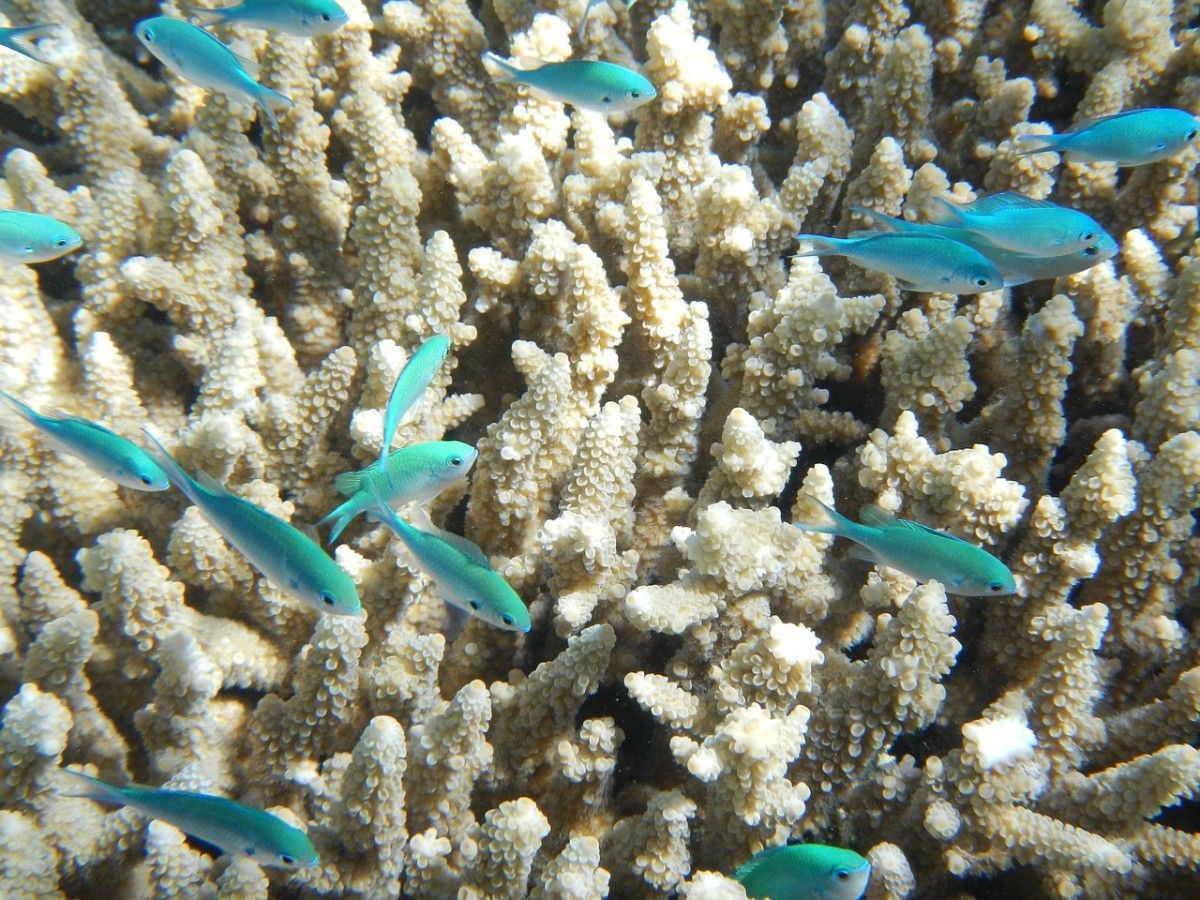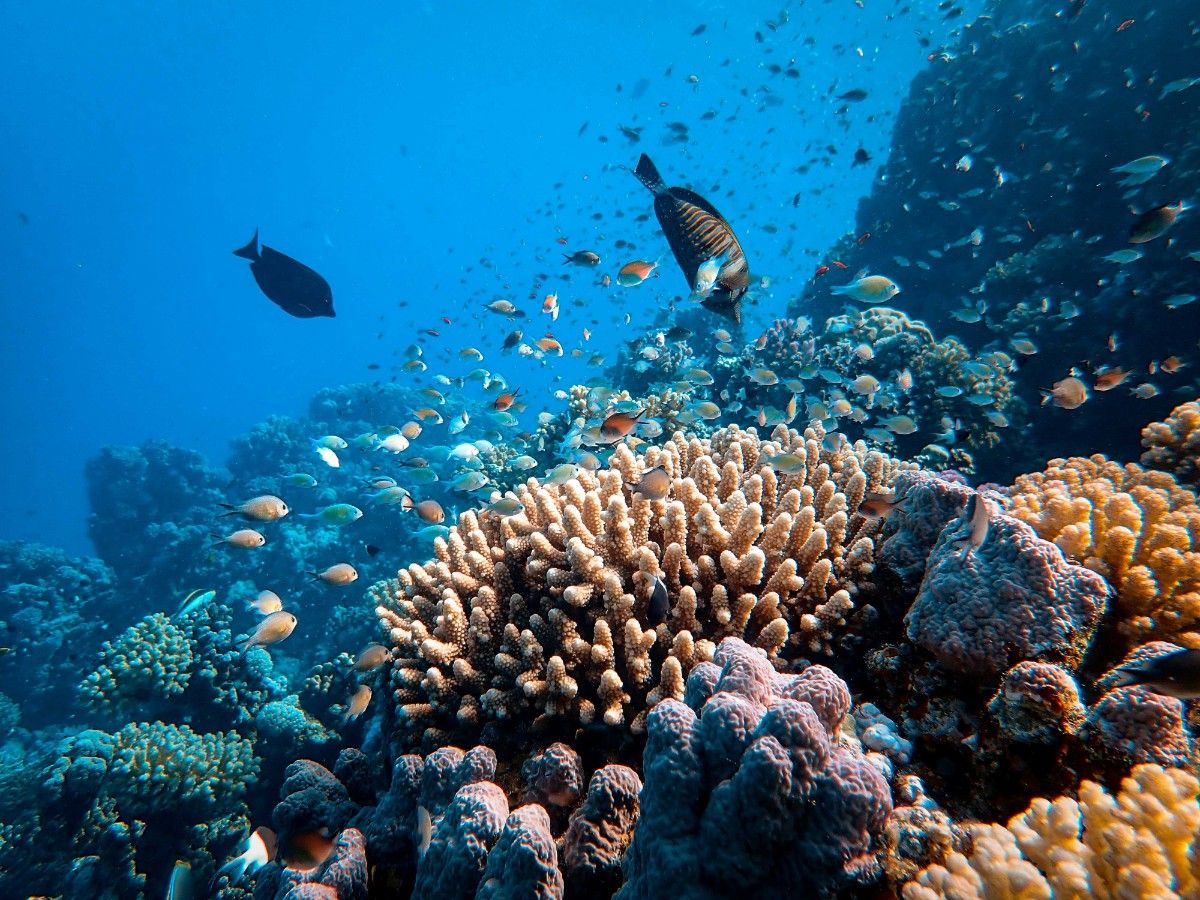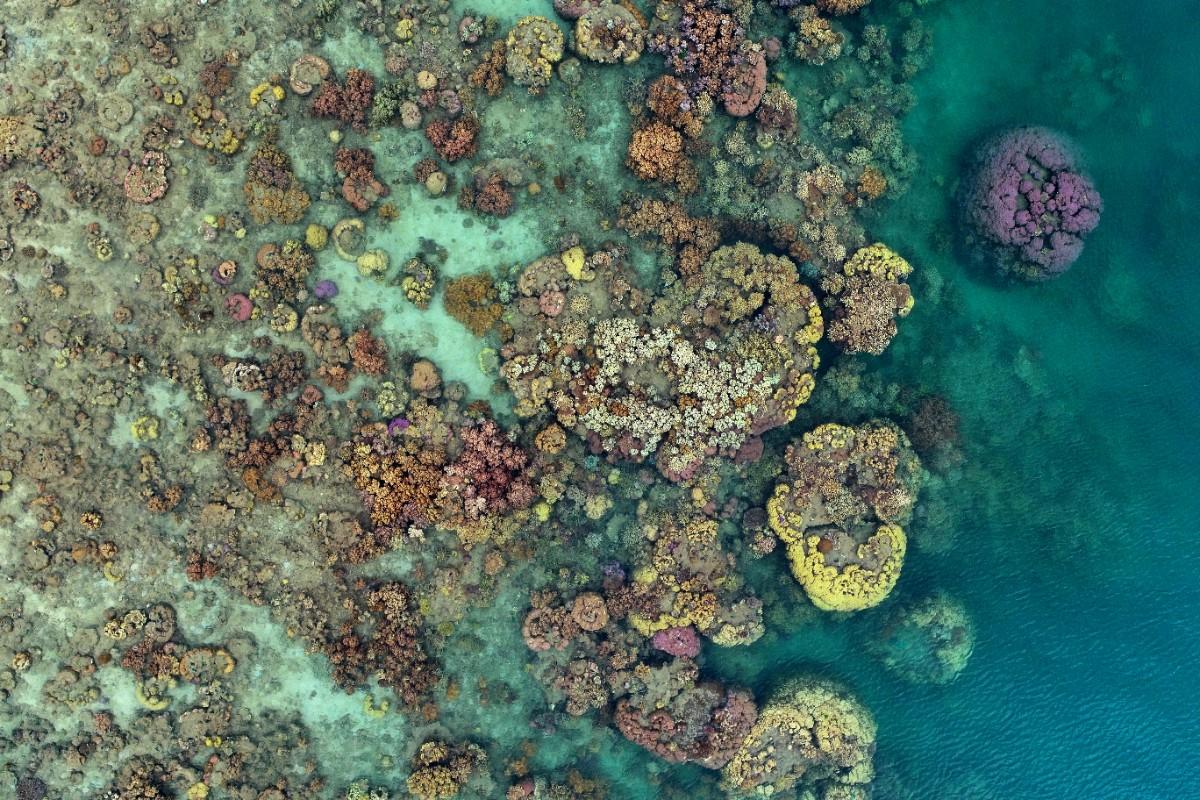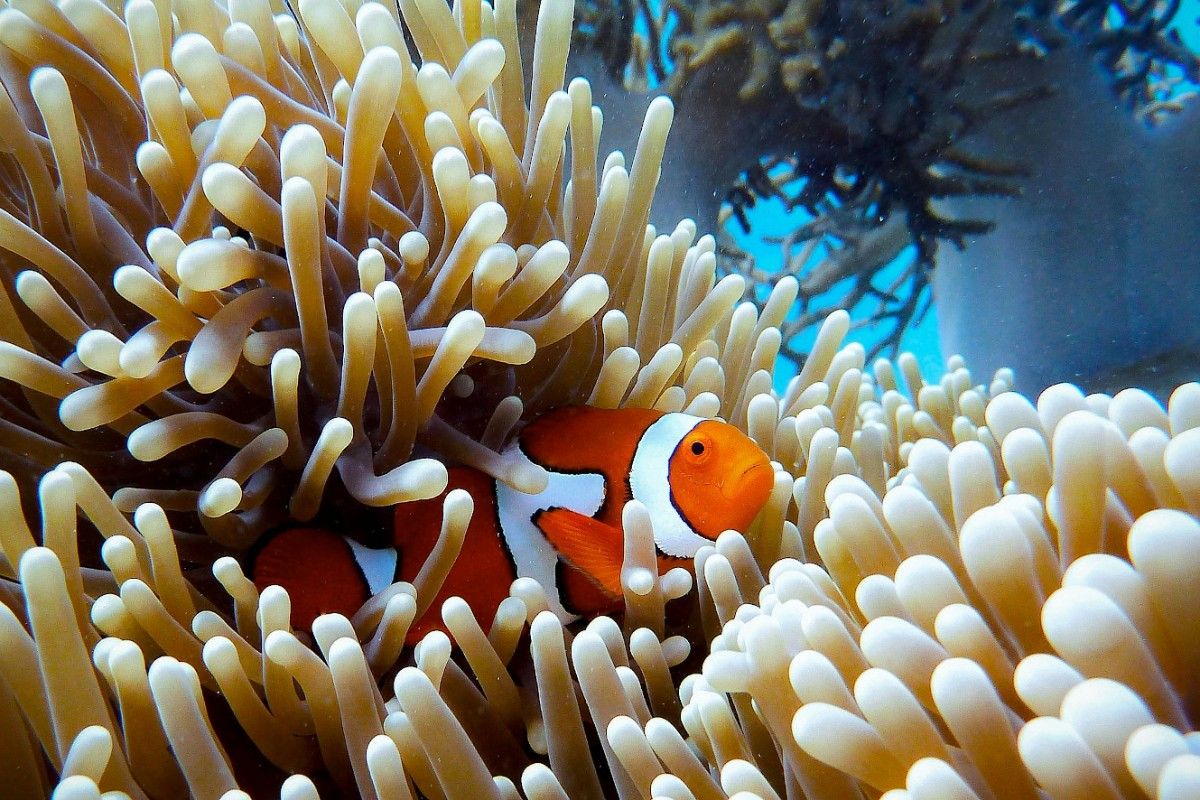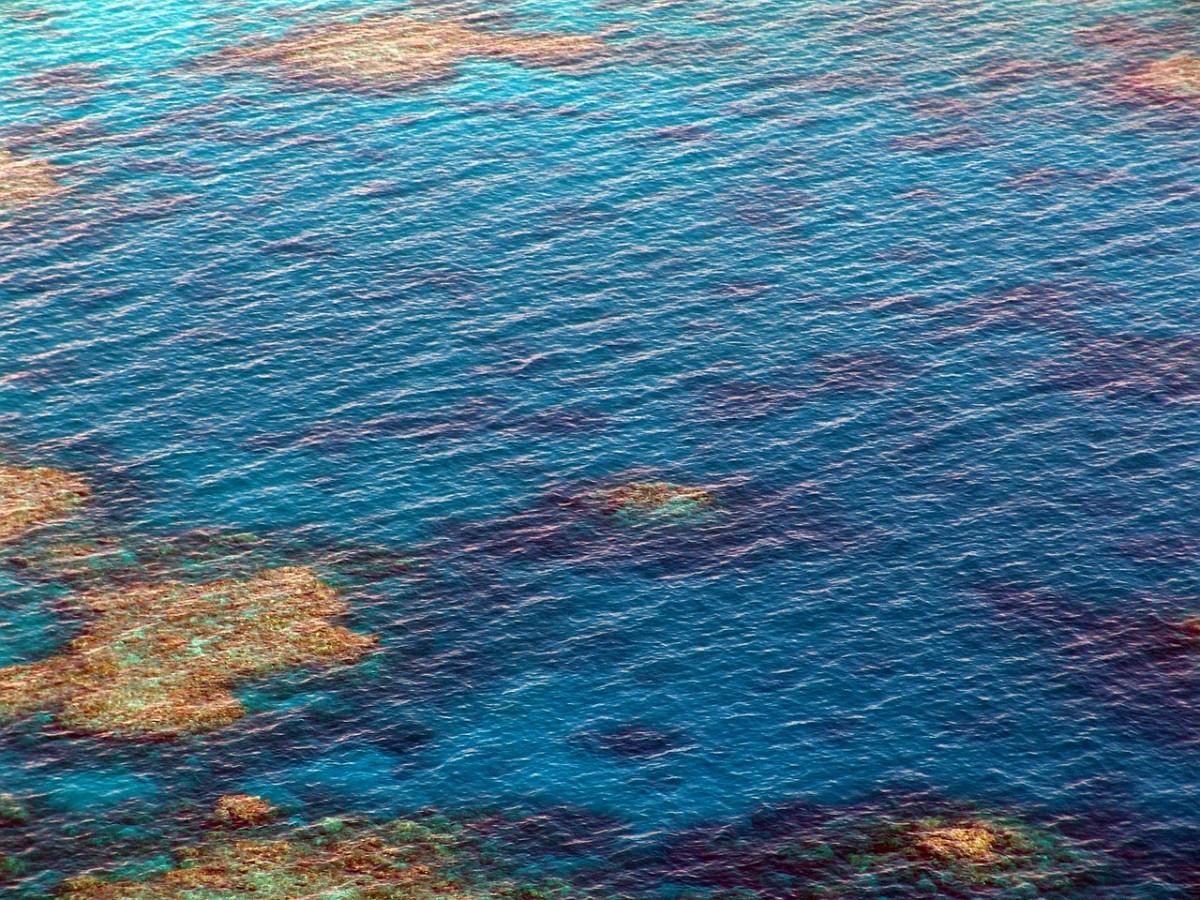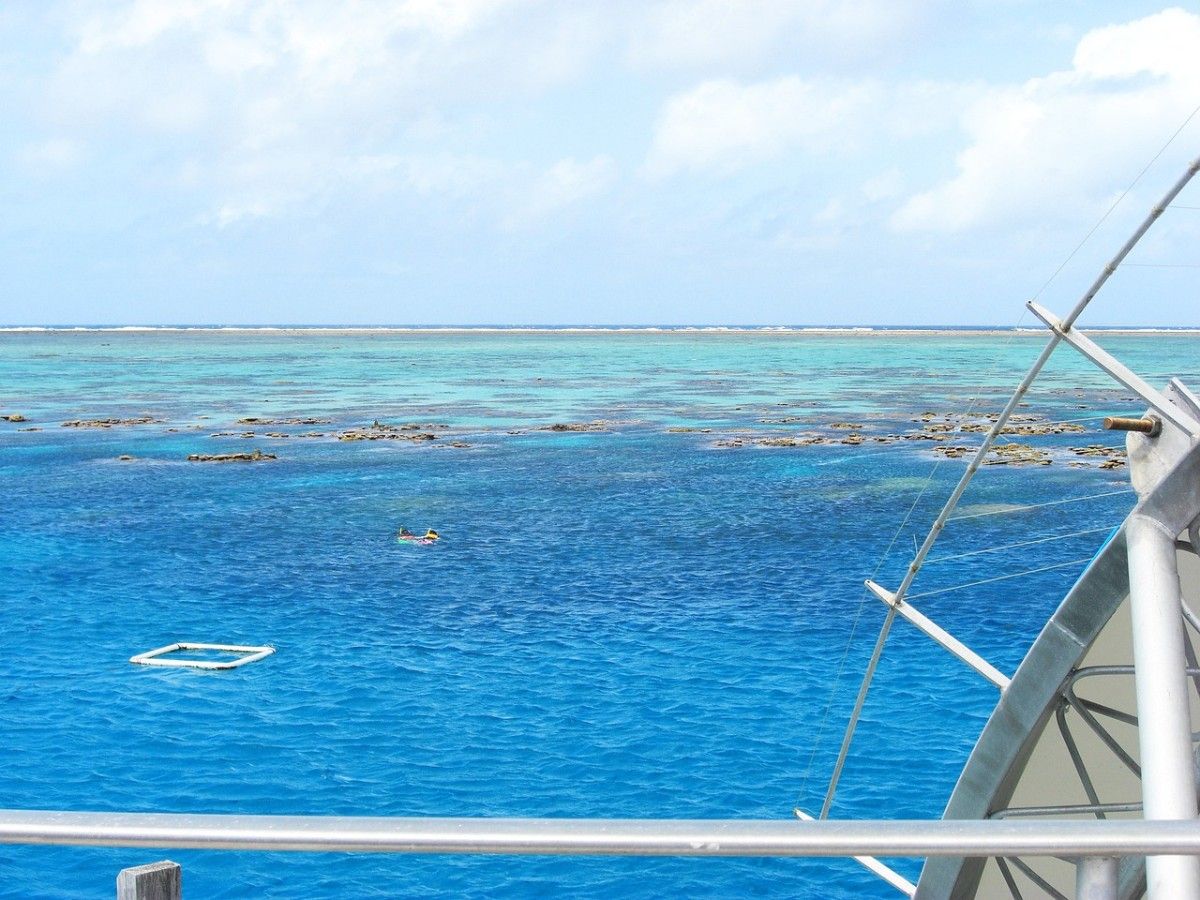The Great Barrier Reef: A Natural Wonder
Introduction to the Great Barrier Reef
A Natural Wonder
The Great Barrier Reef, situated off the coast of Queensland in northeastern Australia, is a natural wonder that captivates the imagination of people around the world. This awe-inspiring ecosystem is the largest coral reef system on Earth, stretching over 2,300 km (1,400 miles) and covering an area of approximately 344,400 square kilometres (133,000 square miles). The reef is a testament to the incredible diversity and resilience of life in our oceans, boasting an unparalleled array of marine species and habitats.
Biodiversity Hotspot
The Great Barrier Reef is renowned for its astounding biodiversity, hosting an incredible variety of marine life. The reef is home to over 1,500 species of fish, including iconic species such as clownfish, parrotfish, and groupers. It also supports more than 400 species of hard coral, which form the backbone of the reef's ecosystem. In addition to fish and coral, the reef is a haven for a wide range of other marine creatures, such as sea turtles, dugongs, dolphins, and whales. The complex interactions between these species create a delicate balance that is essential to the health and survival of this remarkable ecosystem.
Importance and Significance
The Great Barrier Reef is not only a natural wonder but also a vital ecosystem that plays a crucial role in the health of our planet's oceans. As the largest coral reef system in the world, it serves as a barometer for the overall well-being of coral reefs globally. The reef also holds immense economic and cultural value, supporting a thriving tourism industry and serving as a sacred site for many Indigenous Australian communities. The traditional ecological knowledge held by these communities is invaluable in understanding and managing the reef's complex ecosystem.
The Location and Extent of the Great Barrier Reef
Geographical Location
The Great Barrier Reef is located in the Coral Sea, off the coast of Queensland, Australia. It extends from the northern tip of Queensland, near the city of Cairns, to the southern end of the reef, just north of Bundaberg. The reef is situated on the continental shelf, which is a relatively shallow area of the ocean floor that extends from the coast to the edge of the continental slope. This unique location provides the ideal conditions for the growth and development of coral reefs, with warm, clear waters and ample sunlight penetrating the shallow depths.
Size and Scale
The Great Barrier Reef is an immense structure, covering an area roughly the size of Italy or Japan. It is not a continuous structure but rather a complex system of over 2,900 individual reefs and 900 islands, separated by deep channels and passages. The reef is so vast that it can be seen from outer space, and it is often referred to as the single largest living structure on Earth. To put its size into perspective, the Great Barrier Reef is larger than the United Kingdom, Holland, and Switzerland combined.
Regional Variations
The Great Barrier Reef is divided into several distinct regions, each with its own unique characteristics and attractions. The northern region, which includes the Ribbon Reefs and the Far Northern Section, is known for its pristine coral gardens and abundant marine life. This area is more remote and less visited than other parts of the reef, making it a popular destination for those seeking a more secluded and untouched experience.
The central region, which includes the Whitsunday Islands and the Townsville area, is the most popular among tourists. This region boasts stunning beaches, excellent snorkelling and diving opportunities, and a wide range of accommodation options, from luxury resorts to budget-friendly backpacker hostels.
The southern region, extending from Mackay to Bundaberg, is characterised by its more temperate waters and diverse array of fish and coral species. This area is less developed than the central region, offering a more laid-back and nature-oriented experience for visitors.
Each of these regions contributes to the overall diversity and beauty of the Great Barrier Reef, showcasing the incredible variety of life and landscapes found within this vast ecosystem. From the vibrant coral gardens of the north to the tranquil beaches of the south, the Great Barrier Reef offers a wealth of experiences and attractions for visitors to enjoy.
The Biodiversity of the Great Barrier Reef
Coral Reef Ecosystem
The Great Barrier Reef is a treasure trove of biodiversity, hosting an astonishing array of marine life. At the heart of this ecosystem are the coral reefs themselves, which are formed by the symbiotic relationship between coral polyps and microscopic algae called zooxanthellae. The coral polyps secrete calcium carbonate to create the hard skeleton of the reef, while the algae provide the polyps with essential nutrients through photosynthesis. This intricate partnership gives rise to the vibrant and colourful reef structures that are home to countless species.
The Great Barrier Reef boasts over 400 species of hard coral, each with its own unique shape, size, and colour. From the delicate branching corals to the robust boulder corals, this diverse array of species creates a complex habitat that supports an incredible variety of marine life. In addition to hard corals, the reef also hosts a wide range of soft corals, sea fans, and sponges, which add to the structural complexity and biodiversity of the ecosystem.
Marine Life
The Great Barrier Reef is a haven for an incredible diversity of marine life, from tiny plankton to majestic whales. The reef is home to over 1,500 species of fish, including iconic species such as clownfish, parrotfish, and groupers. These fish play vital roles in the reef ecosystem, with herbivorous species like parrotfish helping to control algae growth, while predatory species like groupers help to maintain the balance of prey populations.
In addition to fish, the Great Barrier Reef supports a wide variety of other marine animals. Six species of sea turtles, including the endangered green and loggerhead turtles, use the reef as a feeding and nesting ground. The reef is also home to the dugong, a gentle marine mammal that grazes on seagrass beds. Whales, dolphins, and sharks are also frequent visitors to the reef, with species such as the humpback whale and the dwarf minke whale using the reef as a migration corridor and breeding ground.
Seabirds and Island Ecosystems
The Great Barrier Reef is not only a sanctuary for marine life but also a crucial habitat for a diverse array of seabirds. The reef's 900 islands provide nesting grounds for over 200 species of birds, including terns, frigatebirds, and shearwaters. These birds play an essential role in the reef ecosystem, acting as nutrient transporters and helping to maintain the balance of island flora and fauna.
The islands of the Great Barrier Reef also host unique terrestrial ecosystems, with many islands boasting endemic species of plants and animals. From the lush rainforests of the Whitsunday Islands to the grassy woodlands of the southern islands, these diverse habitats contribute to the overall biodiversity and ecological significance of the Great Barrier Reef.
The Importance of the Great Barrier Reef
Ecological Significance
The Great Barrier Reef is not only a natural wonder but also a vital ecosystem that plays a crucial role in the health of our planet's oceans. As the largest coral reef system in the world, it serves as a barometer for the overall well-being of coral reefs globally. Coral reefs are often referred to as the "rainforests of the sea" due to their incredible biodiversity and the essential ecosystem services they provide.
The Great Barrier Reef, in particular, is a key indicator of the impacts of climate change, ocean acidification, and other environmental stressors on marine ecosystems. The health of the reef and its ability to recover from disturbances, such as coral bleaching events, provide valuable insights into the resilience of coral reefs worldwide. As a result, the Great Barrier Reef is a focus of intense scientific research, with scientists from around the world studying its ecology, biodiversity, and response to environmental changes.
Economic Value
In addition to its ecological significance, the Great Barrier Reef also holds immense economic value. The reef supports a thriving tourism industry, attracting millions of visitors each year and generating billions of dollars in revenue for the Australian economy. In the 2016-2017 financial year alone, the reef contributed an estimated $6.4 billion to the Australian economy and supported over 64,000 jobs.
The tourism industry associated with the Great Barrier Reef encompasses a wide range of activities, from snorkelling and diving to island resort stays and scenic flights. This industry not only provides employment opportunities for local communities but also helps to raise awareness about the importance of the reef and the need for its conservation.
Cultural Significance
The Great Barrier Reef holds deep cultural significance for many Indigenous Australian communities, who have maintained a close connection to the reef for thousands of years. The Traditional Owners of the reef, including the Torres Strait Islander and Aboriginal peoples, have a rich cultural heritage that is intrinsically linked to the reef and its resources.
For these communities, the Great Barrier Reef is not only a source of sustenance but also a sacred site imbued with spiritual meaning. The reef features prominently in traditional stories, songs, and artwork, and many Indigenous communities maintain traditional practices, such as turtle and dugong hunting, that are closely tied to the reef ecosystem.
The traditional ecological knowledge held by Indigenous communities is invaluable in understanding and managing the Great Barrier Reef. This knowledge, passed down through generations, provides unique insights into the reef's ecology, the behaviour of its marine life, and the sustainable use of its resources. Collaborative management initiatives that incorporate traditional knowledge alongside modern scientific understanding are increasingly being recognised as crucial for the long-term conservation of the Great Barrier Reef.
Threats to the Great Barrier Reef
Climate Change and Coral Bleaching
Climate change poses the most significant threat to the Great Barrier Reef, with rising sea temperatures and ocean acidification causing widespread coral bleaching and mortality. Coral bleaching occurs when corals expel the symbiotic algae (zooxanthellae) that live within their tissues due to stress factors such as increased water temperature. These algae provide the corals with essential nutrients and are responsible for their vibrant colours. Without the zooxanthellae, the coral tissues become translucent, revealing the white skeleton beneath, hence the term "bleaching."
Mass coral bleaching events have become more frequent and severe in recent decades, with the Great Barrier Reef experiencing significant bleaching in 1998, 2002, 2016, 2017, and 2020. The 2016 and 2017 bleaching events were particularly devastating, affecting over two-thirds of the reef and causing the death of up to 50% of the coral in some areas. As global temperatures continue to rise due to climate change, the frequency and intensity of these bleaching events are expected to increase, posing a grave threat to the long-term survival of the Great Barrier Reef.
In addition to coral bleaching, ocean acidification is another significant threat associated with climate change. As the ocean absorbs increasing amounts of carbon dioxide from the atmosphere, it becomes more acidic, making it harder for corals and other calcifying organisms to build their skeletons. This can lead to reduced coral growth rates, weakened reef structures, and increased vulnerability to erosion and storm damage.
Poor Water Quality and Pollution
Poor water quality, caused by land-based pollutants and sediment runoff, is another major threat to the Great Barrier Reef. Agricultural activities, such as sugarcane farming and cattle grazing, are significant contributors to this problem, as they can lead to increased levels of nutrients, pesticides, and sediment in the reef's waters.
Excess nutrients, particularly nitrogen and phosphorus, can fuel the growth of algae and other nuisance species, which can smother and outcompete corals. Pesticides and other chemical pollutants can also have toxic effects on corals and other marine life, compromising their health and resilience.
Sediment runoff is another critical issue, as it can smother coral colonies and reduce the amount of light reaching the reef, hindering photosynthesis and coral growth. Dredging activities associated with coastal development and port expansion projects can also contribute to increased sedimentation and turbidity in reef waters.
Other Human-Induced Pressures
In addition to climate change and water quality issues, the Great Barrier Reef faces a range of other human-induced pressures. Overfishing and destructive fishing practices, such as the use of explosives and cyanide, can disrupt the delicate balance of reef ecosystems and deplete key species.
The crown-of-thorns starfish, a native predator of coral, has also been a significant concern in recent decades. While these starfish are a natural part of the reef ecosystem, their populations can explode under certain conditions, leading to the widespread destruction of coral colonies. Outbreaks of crown-of-thorns starfish are thought to be exacerbated by human activities, such as nutrient pollution and overfishing of the starfish's natural predators.
Coastal development, including the construction of resorts, marinas, and other infrastructure, can also have negative impacts on the Great Barrier Reef. These developments can lead to the destruction of coastal habitats, increased pollution and sedimentation, and the introduction of invasive species through ballast water discharge from ships.
As the Great Barrier Reef continues to face these multiple, interconnected threats, effective conservation and management efforts are critical to ensuring its long-term health and resilience.
Conservation Efforts and Management
The Great Barrier Reef Marine Park
Established in 1975, the Great Barrier Reef Marine Park is a cornerstone of efforts to protect and manage the reef. The marine park covers approximately 344,400 square kilometres, encompassing most of the Great Barrier Reef ecosystem. The park is managed by the Great Barrier Reef Marine Park Authority (GBRMPA), a dedicated government agency responsible for the reef's conservation and sustainable use.
The GBRMPA employs a multi-faceted approach to managing the marine park, which includes zoning, permitting, and enforcement. The zoning system divides the park into different areas, each with specific management objectives and regulations governing activities such as fishing, tourism, and research. This helps to balance competing uses of the reef while ensuring the protection of its most sensitive and valuable areas.
In addition to zoning, the GBRMPA works to address key threats to the reef, such as water quality and climate change, through partnerships with other government agencies, research institutions, and stakeholder groups. The authority also plays a crucial role in educating the public about the importance of the Great Barrier Reef and promoting responsible reef practices among park users.
Research and Monitoring
Scientific research and monitoring are essential components of efforts to understand and protect the Great Barrier Reef. The GBRMPA, along with a network of research institutions and government agencies, conducts ongoing monitoring of the reef's health, biodiversity, and environmental conditions.
Programs like the Long-Term Monitoring Program, which has been running since 1993, provide valuable data on the status and trends of reef ecosystems over time. This information is critical for identifying emerging threats, evaluating the effectiveness of management strategies, and informing policy decisions related to the reef.
Research on the Great Barrier Reef also focuses on developing innovative solutions to the challenges facing the reef. For example, scientists are exploring the potential for coral restoration techniques, such as coral nurseries and assisted evolution, to help rebuild damaged reef areas and boost the resilience of coral populations to future stress events.
Community Engagement and Stewardship
Engaging local communities and fostering a sense of stewardship for the Great Barrier Reef are critical aspects of conservation efforts. The GBRMPA and other organisations work closely with Traditional Owners, the tourism industry, fishers, and other stakeholders to promote sustainable practices and involve these groups in the management of the reef.
The Reef Guardian program, for instance, recognises and supports the efforts of local communities, schools, and businesses to protect the reef through sustainable practices and community-based conservation initiatives. By empowering these groups to take an active role in reef conservation, the program helps to build a strong foundation for the long-term protection of the Great Barrier Reef.
Education and outreach programs are also essential for raising awareness about the importance of the reef and the threats it faces. Visitor centres, interpretive signage, and educational resources help to inform and inspire people to take action to protect the reef, whether through responsible tourism practices, supporting conservation initiatives, or making environmentally conscious choices in their daily lives.
As the Great Barrier Reef continues to face an array of complex challenges, effective conservation and management efforts will be critical to ensuring its long-term health and resilience. By combining the best available science with the active engagement of local communities, best conservation practices and protection of the GBR can continue into the future preserving this remarkable ecosystem for generations to come.
Experiencing the Great Barrier Reef
Snorkelling and Diving
One of the most popular ways to experience the wonders of the Great Barrier Reef is through snorkelling and diving. These activities allow visitors to immerse themselves in the vibrant underwater world of the reef and encounter its incredible diversity of marine life up close. With over 2,900 individual reefs and 900 islands to explore, the Great Barrier Reef offers endless opportunities for underwater adventures.
Snorkelling is a great option for those who want to enjoy the beauty of the reef without the need for extensive training or equipment. Many tour operators offer guided snorkelling trips, which typically include equipment rental and instruction from experienced guides. Popular snorkelling sites include the shallow, sheltered waters of the Inner Reef, where visitors can marvel at colourful coral gardens and encounter a wide variety of tropical fish.
For those seeking a deeper exploration of the Great Barrier Reef, scuba diving is an unforgettable experience. The reef's clear, warm waters and abundant marine life make it a top destination for divers of all skill levels. Dive sites range from shallow, beginner-friendly areas to more challenging sites featuring steep drop-offs, underwater canyons, and shipwrecks. Some of the most famous dive sites in the Great Barrier Reef include the Yongala Wreck, the Cod Hole, and the Ribbon Reefs.
Island Hopping and Reef Tours
In addition to snorkelling and diving, there are many other ways to experience the Great Barrier Reef. Island hopping is a popular activity, allowing visitors to explore the unique landscapes and attractions of the reef's 900 islands. From the luxurious resorts of Hamilton Island to the unspoiled wilderness of Hinchinbrook Island, there is an island experience to suit every taste and budget.
Guided reef tours are another excellent way to discover the wonders of the Great Barrier Reef. These tours range from half-day trips to multi-day liveaboard expeditions and cater to a wide variety of interests and abilities. Glass-bottom boat tours offer a unique perspective on the reef's underwater world, while snorkelling and diving tours provide a more immersive experience.
For those who prefer to stay dry, there are also many options for experiencing the Great Barrier Reef from above the water. Scenic flights and helicopter tours provide breathtaking aerial views of the reef's vast expanse and intricate maze of coral formations. Cruises and sailing trips allow visitors to explore the reef at a more leisurely pace, with opportunities for island stopovers, sunset views, and stargazing.
Responsible Reef Practices
When visiting the Great Barrier Reef, it is essential to practice responsible reef etiquette to minimise human impact on this fragile ecosystem. Visitors should take care to avoid touching, stepping on, or damaging coral formations, as even the slightest contact can harm these delicate organisms. The use of reef-safe sunscreen is also important to prevent chemical damage to corals and other marine life.
Responsible reef practices extend beyond individual actions and include choosing eco-friendly tour operators and accommodations that adhere to strict environmental guidelines. Look for operators that are certified by the Ecotourism Australia or are members of the Reef Guardian program, which recognises businesses that demonstrate a commitment to sustainable reef practices.
By following these guidelines and supporting responsible tourism initiatives, visitors can help to ensure that the Great Barrier Reef remains a healthy and vibrant ecosystem for generations to come. Experiencing the reef firsthand is not only a bucket-list worthy adventure but also an opportunity to deepen one's appreciation for the natural world and the urgent need to protect it.
The Future of the Great Barrier Reef
Challenges and Threats
As one of the most iconic and important ecosystems on the planet, the future of the Great Barrier Reef is a matter of global concern. Despite its immense size and ecological significance, the reef faces a multitude of challenges and threats that jeopardise its long-term health and survival.
Climate change is the most pressing threat to the Great Barrier Reef, with rising sea temperatures, ocean acidification, and more frequent and intense weather events all taking a toll on the reef's delicate ecosystem. Mass coral bleaching events, caused by prolonged periods of abnormally high water temperatures, have become increasingly common in recent years, leading to widespread coral mortality and the degradation of reef habitats.
In addition to climate change, the Great Barrier Reef is also impacted by a range of other human-induced pressures, including poor water quality, coastal development, overfishing, and outbreaks of invasive species like the crown-of-thorns starfish. These multiple, interconnected threats highlight the urgent need for effective conservation and management strategies to safeguard the reef's future.
Resilience and Adaptation
Despite the many challenges facing the Great Barrier Reef, there is still hope for its long-term survival. The reef has shown remarkable resilience in the face of past disturbances, and scientists are working to better understand the factors that contribute to this resilience and how they can be harnessed to support the reef's recovery and adaptation.
One key area of research is the identification and protection of "refugia" - areas of the reef that are naturally more resistant to stressors like coral bleaching and ocean acidification. By prioritising the conservation of these resilient reefs, scientists hope to create a network of strongholds that can help to repopulate and regenerate damaged areas of the reef over time.
Another promising area of research is the development of coral restoration techniques, such as coral nurseries and assisted evolution. These approaches involve growing corals in controlled environments and selectively breeding them for traits like heat tolerance and disease resistance, with the goal of creating more resilient coral populations that can better withstand the impacts of climate change.
The Importance of Global Action
Ultimately, the future of the Great Barrier Reef depends not only on local conservation efforts but also on global action to address the root causes of climate change. As the world's largest coral reef system, the Great Barrier Reef is a stark reminder of the urgent need to reduce greenhouse gas emissions and transition to a more sustainable, low-carbon future.
Governments, businesses, and individuals all have a role to play in this effort, from supporting clean energy initiatives and sustainable development practices to making environmentally conscious choices in our daily lives. By working together to address the global challenge of climate change, we can help to create a future in which the Great Barrier Reef and other vital ecosystems can thrive.
In the meantime, the ongoing efforts of scientists, conservationists, and local communities to protect and manage the Great Barrier Reef remain critical. Through a combination of research, innovation, and community engagement, these dedicated individuals and organisations are working tirelessly to build the reef's resilience and ensure its survival for generations to come.
As we look to the future, the Great Barrier Reef serves as a powerful symbol of both the fragility and the resilience of life on Earth. By embracing our shared responsibility to protect this natural wonder, we can help to ensure that its beauty, biodiversity, and ecological significance endure long into the future.
Related Articles

Let us know you agree to cookies
We use marketing, analytical and functional cookies as well as similar technologies to give you the best experience. Third parties, including social media platforms, often place tracking cookies on our site to show you personalised adverts outside of our website.
We store your cookie preferences for two years and you can edit your preferences via ‘manage cookies’ or through the cookie policy at the bottom of every page. For more information, please see our cookie policy.
